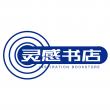
基础医学科技英语
正版保障 假一赔十 可开发票
¥ 23.07 4.7折 ¥ 49 全新
库存14件
广东广州
认证卖家担保交易快速发货售后保障
作者曹民主,安强梅,张宏斌主编
出版社科学出版社
ISBN9787030377227
出版时间2013-08
装帧其他
开本16开
定价49元
货号8191012
上书时间2024-09-05
- 最新上架
商品详情
- 品相描述:全新
- 商品描述
-
目录
前言 Foreword
Chapter 1 The General Plan of the Human Body
1.1 What are Living Things Made of
1.2 Body Systems
1.3 Directions in the Body
1.4 Body Cavities
1.5 The Metric System
Chapter 2 Disease and Disease-producing Organisms
2.1 What is Disease
2.2 The Study of Disease
2.3 Disease Terminology
2.4 Infection
2.5 The Microorganisms
2.6 Microbial Control
2.7 Laboratory Identification of Pathogens
Chapter 3 Chemistry of Life
3.1 What is Chemistry
3.2 A Look at Atoms
3.3 Molecules,Elements,Compounds and Mixtures
3.4 Ions and Electrolytes
3.5 Acids and Bases
3.6 The Chemistry of Living Matter
Chapter 4 Cell Structure and Function
4.1 Cellular Organization
4.2 Crossing the Plasma
4.3 The Cell Cycle
Chapter 5 Body Tissues and Membranes
5.1 Epithelial Tissue
5.2 Connective Tissue
5.3 Muscular Tissue
5.4 Nervous Tissue
5.5 ExtracellularJunctions,Glands,and Membranes
Chapter 6 The Blood
6.1 Purposes of the Blood
6.2 Blood Constituents
6.3 Origin of the Corpuscles
6.4 Blood Clotting
6.5 Uses of Blood Derivatives
6.6 Blood Disorders
6.7 Blood Studies
6.8 Blood Chemistry Tests
6.9 Other Blood Tests
Chapter 7 The Heart and the Heart Disease
7.1 Circulation and the Heart
7.2 Structure of the Heart
7.3 Physiology of the Heart
7.4 Heart Disease
7.5 Prevention of Heart Ailments
7.6 Some Practical Aspects of Treatment
Chapter 8 Blood Vessels and Blood Circulation
8.1 Kinds of Blood Vessels
8.2 Structure of Blood Vessels
8.3 Names of Systemic Arteries
8.4 Names of Systemic Veins
8.5 How Capillaries Work
8.6 Pulse and Blood Pressure
8.7 Disorders Involving the Blood Vessels
8.8 Replacement of Arteries
Chapter 9 Bones,Joints and Muscles
9.1 The Musculoskeletal System
9.2 The Bones
Chapter 10 The Integumentary System
10.1 Structure of the Skin
10.2 Accessory Structures of the Skin
10.3 Disorders of the Skin
10.4 Effects of Aging
10.5 Homeostasis
Chapter 11 Respiration
11.1 Respiration
11.2 The Respiratory System
11.3 The Lung Cavities
11.4 Physiology of Respiration
11.5 Disorders of the Respiratory System
11.6 Some Practical Aspects of Ventilation
11.7 Spe Equipment for Respiratory Tract Treatments
Chapter 12 Digestion and Indigestion
12.1 What the Digestive System Does
12.2 The Alimentary Canal
12.3 The Accessory Structures
12.4 The Peritoneum
12.5 Some Practical Aspects of Nutrition
Chapter 13 Urinary System and Excretion
13.1 Urinary System
13.2 Anatomy of the Kidney and Excretion
13.3 Regulatory Functions of the Kidneys
13.4 Problems with Kidney Function
13.5 Effects of Aging
Chapter 14 The Endocrine System
14.1 Endocrine Glands
14.2 Hypothalamus and Pituitary Gland
14.3 Thyroid and Parathyroid Glands
14.4 Adrenal Glands
14.5 Pancreas
14.6 Other Endocrine Glands
14.7 Chemical Signals
14.8 Effects of Aging
14.9 Homeostasis
Chapter 15 The Brain,the Spinal Cord and the Nerves
15.1 The Nervous System as a Whole
15.2 Nerves in General
15.3 Central Nervous System
15.4 The Peripheral Nervous System
15.5 The Autonomic Nervous System
Chapter 16 The Sensory System
16.1 Sense and Sensory Mechanisms
16.2 The Eye
16.3 The Ear
16.4 Other Organs of Spe Sense
16.5 General Senses
Chapter 17 Body Temperature and Its Regulation
17.1 Body Temperature and Homeostasis
17.2 Heat Production
17.3 Heat Loss
17.4 Temperature Regulation
17.5 Normal Body Temperature
17.6 Abnormal Body Temperature
17.7 Effects of Extreme
Chapter 18 The Lymphatic System and Body Defenses
18.1 Lymphatic System
18.2 Organs,Tissue and Cells of the Immune System
18.3 Nonspecific and Specific Defenses
18.4 Induced Immunity
18.5 Effects of Aging
18.6 Homeostasis
Chapter 19 Reproduction
19.1 Male Reproductive System
19.2 Female Reproductive System
19.3 Pregnancy
19.4 The Menopause
Chapter 20 Human Genetics
20.1 Chromosomal Inheritance
20.2 Down Syndrome
20.3 Too Many/Too Few Sex Chromosomes
20.4 Genetic Inheritance
20.5 DNA Technology
Medical Terminology
Key to the Exercises
参考文献 References
内容摘要
曹民主、安强梅、张宏斌主编的这本《基础医学科技英语》依照国家对高等医学院校人才培养的精神,以英语与专业融合为主线,关注世界医学科技的前沿。本书选取了国外原版材料内容,英语语言地道、严谨、准确,融解剖、生理等核心内容为一体。共20章,涉及解剖、生理、病理、预防与治疗、环境与健康、保健与锻炼等方向的知识,每章除了专业性文章外,还列出生词、词组、典型句分析与翻译等,章后配有相应的练习。基础医学阶段的英语词汇覆盖率达90%,有利于学生对基础医学知识的学习。
本书可作为医学相关专业本科生、研究生的医学英语教材,也可作为具有一定医学英语基础的从业人员的参考书。
相关推荐
— 没有更多了 —


















以下为对购买帮助不大的评价